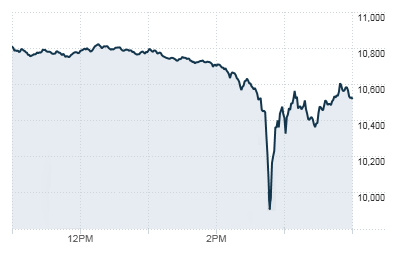Navigating the Current: Top 5 Trends in Data Streaming
Dive into the dynamic world of data streaming, where every byte holds a story in real-time! Join us as we unravel the Top 5 Trends shaping the future of how we process, analyze, and secure streaming data. From lightning-fast insights to the edge of innovation, this journey promises to be a current of discovery. Let’s ride the waves of data together!
1.The Pulsating World of Data Streaming
In the dynamic landscape of data-driven technology, data streaming has emerged as a pulsating force, reshaping how we interact with and harness information. It’s not merely about the velocity at which data flows; it’s the real-time orchestration of insights, the seamless connectivity across platforms, and the transformative power of instantaneous decision-making. As businesses navigate the currents of this data-driven era, data streaming stands at the forefront, offering a continuous flow of innovation, connectivity, and possibilities. Whether it’s the swift processing of information, the adoption of robust frameworks, collaborative data sharing, seamless multi-cloud integration, or the infusion of AI, data streaming encapsulates the heartbeat of modern information exchange, driving us towards an era of unprecedented connectivity and intelligence.
Below we’ll highlight five of the most notable data streaming trends that continue to stand out in 2024.
Trend 1: Real-time Processing
Real-time processing has played a pivotal role in historical events, particularly in financial markets. During the 2010 Flash Crash, where the stock market experienced a sudden and severe drop, real-time processing capabilities allowed trading systems to detect anomalies and implement corrective measures within milliseconds. This exemplifies how real-time processing is not just a trend but a critical component in ensuring the stability of financial systems.

Real-life Example: The 2010 Flash Crash showcased the importance of real-time processing as it allowed financial systems to respond swiftly, preventing more significant market disruptions.
Trend 2: Rise of Stream Processing Frameworks
The rise of stream processing frameworks has been integral in the functioning of major social media platforms. Platforms like Twitter leverage these frameworks to process and categorize millions of tweets per second, ensuring users see trending topics and personalized content in real-time. The adoption of stream processing frameworks has thus become synonymous with providing users with immediate and relevant information.
Real-life Example: Twitter’s use of stream processing frameworks highlights their significance in managing and categorizing vast amounts of real-time data, contributing to the platform’s dynamic and responsive nature.
Trend 3: Data Sharing
The concept of data sharing has been a game-changer in the aerospace industry. Organizations like NASA have embraced collaborative data sharing to analyze and interpret vast amounts of space-related data. Through decentralized architectures and streaming protocols, NASA can collaborate with international space agencies in real-time, contributing to breakthroughs in space exploration.
Real-life Example: NASA’s collaboration with international space agencies demonstrates the power of data sharing in accelerating discoveries and advancements in space exploration.
Trend 4: Multi-Cloud
Multi-cloud integration has been instrumental in ensuring business continuity during critical events. The Fukushima nuclear disaster in 2011 saw companies like Toyota utilizing multi-cloud strategies to maintain their IT operations. In the face of challenges, multi-cloud integration allowed these companies to quickly shift their data processing and storage to alternative cloud providers, ensuring uninterrupted operations.
Real-life Example: Toyota’s use of multi-cloud strategies during the Fukushima disaster exemplifies how this trend enhances resilience and business continuity during unforeseen circumstances.
Trend 5: AI in Data Streaming
The healthcare industry has witnessed the transformative impact of AI in data streaming through historical events. During the Ebola outbreak in West Africa in 2014, organizations like the World Health Organization (WHO) utilized AI algorithms for real-time analysis of health data. AI in data streaming facilitated the identification of outbreak patterns, helping healthcare providers respond effectively.
Real-life Example: The WHO’s use of AI in data streaming during the Ebola outbreak underscores how this trend contributes to proactive and data-driven responses in public health crises.
These historical examples showcase how these data streaming trends are not just theoretical concepts but have been pivotal in shaping responses and outcomes in critical events across various industries.
2. Wrapping Up
So, here’s the wrap-up: Real-time processing helps in quick decisions, stream processing frameworks organize data like social media does with tweets. Big organizations like NASA use data sharing for space exploration, and when things get tough, multi-cloud keeps things running. AI in healthcare, like during the Ebola outbreak, helps in smart decisions. In this tech world, these trends are like tools helping us stay smart, connected, and ready for what’s next. Let’s keep riding this tech wave, using data to make things better every day!







